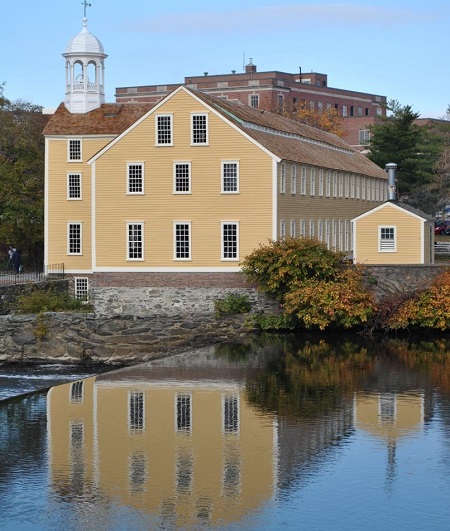Felix/Kallman Bill To Promote Transit-Oriented
Development Heads To Governor’s Desk

STATE HOUSE – The General Assembly passed a bill sponsored by Rep. Leonela Felix and Sen. Meghan Kallman to promote the construction of housing units near transportation hubs such as the Pawtucket/Central Falls train station. The legislation is part of House Speaker K. Joseph Shekarchi’s 14-bill package of legislation to address Rhode Island’s housing crisis.
“Promoting denser development around transit hubs is not only about creating affordable housing, but also about building more sustainable and equitable communities,” said Representative Felix (D-Dist. 61, Pawtucket).
“By investing in mixed-use developments near public transportation, this pilot program will help address housing shortages, reduce traffic, improve air quality and move us closer to achieving our carbon emission targets. Accessible housing and reliable public transportation are essential components of creating equitable and sustainable communities.”
The bill (2023-H 6084B, 2023-S 1052A) would create a pilot program to fund projects that build dense, mixed-use development around transit centers like train stations and bus hubs. The program would work in concert with the state’s Transit Forward 2040 master plan, which sets out steps to build a modern, efficient public transportation system throughout the state by 2040.
Part of the master plan is focusing development around “regional transit hubs” like the Pawtucket/Central Falls train station and Kennedy Plaza, as well as “frequent transit” stops where buses would run every fifteen minutes. By building housing in these areas, advocates say, residents would be able to get around without needing to drive everywhere. Reducing the number of cars on the road reduces traffic and potholes, improves air quality and helps the state comply with carbon emission targets.
The state already has some transit-oriented development planned around the new train station and transit hub in Pawtucket and Central Falls. Because of this, the two communities would be well positioned to utilize this pilot program to spur more housing production. Other municipalities around the state would also be able to apply for this funding, provided they comply with the zoning requirements.
“We don’t have to look far to see what a bright future will look like,” said Senator Kallman. “Housing people can actually afford, great public transportation, preserved open spaces, less traffic and cleaner streets. We’re doing it right here in Pawtucket and Central Falls. This bill provides resources and tools so other communities can follow our lead.”
The legislation would allow municipalities with developable land or properties within a one-quarter mile radius of a regional mobility hub or a one-eighth mile radius of a frequent transit stop to apply for funding for housing in these areas, as long as they comply with certain density requirements. The state budget passed by the House last week allocates $4 million to such projects, with potential additional funding available from a new program that allows the Secretary of Housing to fund projects.
More transit-oriented development would mean more housing units and fewer car trips.
Transportation currently represents nearly 40% of the state’s greenhouse gas emissions. About 10% of children in Rhode Island children have asthma and research has found tailpipe emissions are responsible for about 13% of childhood asthma cases. Rhode Island currently has among the worst roads in the country, a product of the state’s density and the relative reliance on car travel.
“The problems are complicated, but the plan is simple: more housing people can afford around transit hubs,” said Brenda Clement, director of HousingWorks RI. “That means more supply of housing, preserving open spaces and residential neighborhoods, less cars on the road, less traffic, less potholes, cleaner air and lower emissions. It’s exactly the kind of development we should be doing.”
The bill now heads to the governor’s desk for his signature.
